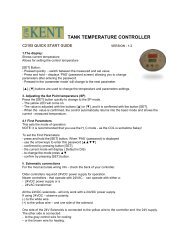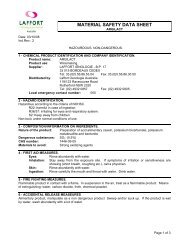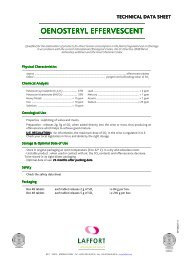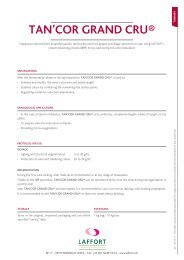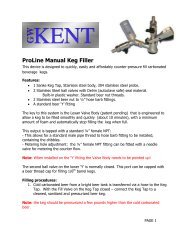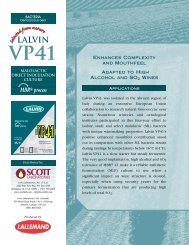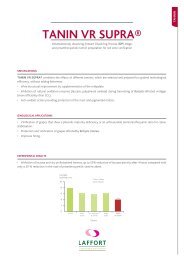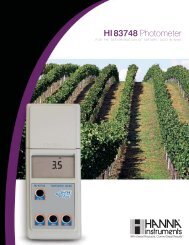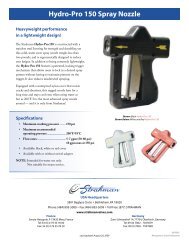THE DIVERSE FUNCTIONS OF OXYGEN, Dominique Delteil ...
THE DIVERSE FUNCTIONS OF OXYGEN, Dominique Delteil ...
THE DIVERSE FUNCTIONS OF OXYGEN, Dominique Delteil ...
You also want an ePaper? Increase the reach of your titles
YUMPU automatically turns print PDFs into web optimized ePapers that Google loves.
DELTEIL, <strong>THE</strong> <strong>DIVERSE</strong> <strong>FUNCTIONS</strong> <strong>OF</strong> <strong>OXYGEN</strong>. 2 ND PART, 4<br />
After the depletion of malic acid, the wine is racked and sulphite is added for the same reasons<br />
as given in example 1.<br />
• After the malolactic fermentation<br />
From this moment onwards, the wines have a fairly low particle load.<br />
In fact, the very first racking after devatting has removed all grape sediments.<br />
The following 2 rackings both remove part of the yeasts.<br />
The post-MLF racking removes very few lactic acid bacteria because lactic acid bacteria<br />
sediment very poorly, but they constitute only a very small mass.<br />
The wine always requires oxygen to proceed in the development of the polyphenolic and<br />
polysaccharide system. But the oxygen should not be added at similar amounts as during the<br />
previous stages.<br />
Microoxygenation is an interesting tool for the purpose of adding small oxygen quantities<br />
regularly: Please refer to the experimental results, below.<br />
The constraints and limitations of its utilization in Mediterranean red winemaking are now widely<br />
known: Dosage, height of the liquid column in the tank, temperature. Wines, which still contain<br />
significant amounts of yeast, have to be stirred regularly by other means (specifically an<br />
immersed pump).<br />
During microoxygenation, the wine is developed homogeneously. But yeast are too heavy to be<br />
kept in solution through the weak flow caused by the microoxygenation.<br />
During tank ageing, the regular stirring of the wine (especially with an agitator or an immersed<br />
pump) also allows to develop wines favourably, specifically those, which were well supplied with<br />
oxygen during maceration and before MLF.<br />
In barrels, the method of reference is the batonnage (yeast less stirring).<br />
The schedule is to be adapted according to the moment of barrel filling, and thus the quantity of<br />
yeasts still in suspension, the polyphenolic and polysaccharide structure of the wine, the age<br />
and quality of the barrels, and the desired integration of wine and oak.<br />
An interesting result may serve as example:<br />
New barrels, a perfectly matured Syrah produced by long maceration, barrelled 24 hours after<br />
draining and pressing (with all the yeast from the alcoholic fermentation but without grape<br />
particles), barrel MLF, post-MLF sulphite addition, batonnage (yeast lees stirring) once per<br />
week during 6 months, then batonnage twice monthly for another 6 months, with no rackings<br />
during the 12 months.<br />
While certainly requiring a high workload and a special arrangement in the cellar (barrels limited<br />
to one level), in the end, an individual Mediterranean wine is obtained.<br />
In this example, the 5 factors cited above (wine, yeast, oak, stirring, oxygen) have been<br />
combined in a particular way, while remaining consistent with certain market objectives.<br />
VINIDEA.NET, WINE INTERNET TECHNICAL JOURNAL, 2004, N°4



